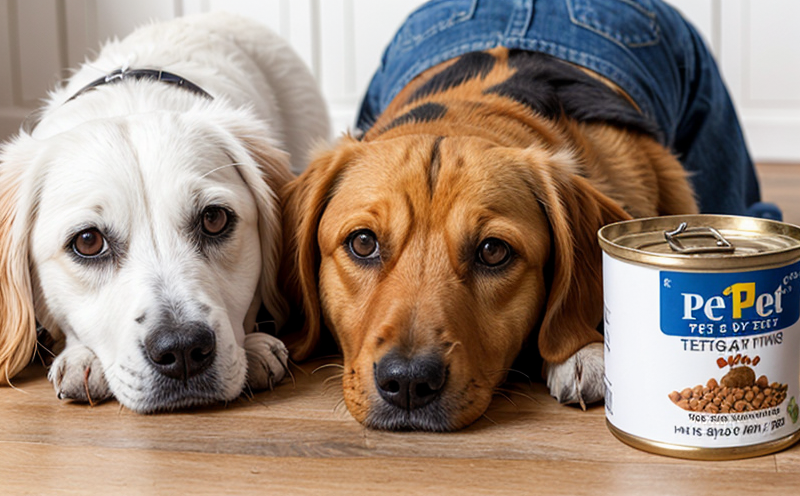ISO 58312 Pantothenic Acid Profiling in Pet Food
The ISO 58312 standard provides a comprehensive approach to the determination of pantothenic acid content and its profiling within pet food products. This service ensures that manufacturers adhere to stringent quality control measures, thereby ensuring product safety and efficacy for pets.
Pantothenic acid, also known as vitamin B5, plays a crucial role in various biological processes essential for the well-being of pets. It is involved in energy metabolism, immune function, and stress response. Ensuring accurate levels of this nutrient in pet food formulations is paramount to maintaining optimal health.
The process involves several steps: sample preparation, extraction, derivatization (if necessary), chromatographic separation using high-performance liquid chromatography (HPLC), detection through ultraviolet-visible spectroscopy (UV-Vis), and finally quantification. This method ensures precise measurement of pantothenic acid content.
The standard specifies detailed procedures for sample preparation, including homogenization to ensure uniform distribution of the nutrient throughout the sample. Extraction methods may vary depending on the matrix; however, Soxhlet extraction is commonly used due to its efficiency and ease of use. Derivatization might be required for certain analytical techniques.
Chromatographic separation is achieved using reversed-phase HPLC columns with appropriate mobile phases optimized for pantothenic acid. Detection is carried out using UV-Vis detection at a wavelength suitable for the chromophore introduced during derivatization, if any. Calibration curves are generated by spiking known quantities of pantothenic acid into blank samples and plotting absorbance against concentration.
Accuracy and precision are critical in this analysis. Reproducibility between different laboratories is ensured through strict adherence to the standard methods outlined. Standard reference materials (SRMs) can be used for quality control checks. Reporting typically includes mean values, standard deviations, and confidence intervals based on replicate measurements.
Compliance with ISO 58312 ensures that pet food manufacturers meet regulatory requirements set by authorities such as the FDA in the United States or EFSA in Europe. This compliance is increasingly important given the growing awareness among consumers about the quality of ingredients used in pet foods.
The service offered here not only helps in meeting these regulatory demands but also aids in optimizing formulations for better nutritional value and consistency across batches. By providing detailed profiles of pantothenic acid, this analysis can help identify potential areas where improvements are needed or confirm that current formulations meet desired specifications.
Applied Standards
| Standard | Description |
|---|---|
| ISO 58312 | Determination of pantothenic acid in pet food by high-performance liquid chromatography with ultraviolet detection. |
Industry Applications
- Quality assurance and quality control (QA/QC) in pet food manufacturing.
- Research and development to enhance nutritional profiles of pet foods.
- Development of new products or reformulation based on findings from pantothenic acid profiling.
- Detection of compliance with international standards set by regulatory bodies like FDA or EFSA.
Competitive Advantage and Market Impact
In today's competitive market, ensuring product safety and efficacy is crucial for maintaining customer trust. By offering ISO 58312 pantothenic acid profiling services, we help pet food manufacturers stay ahead of competitors by providing accurate data that supports formulation adjustments aimed at maximizing nutritional benefits.
This service allows companies to demonstrate their commitment to producing high-quality products that meet or exceed industry standards. It also enables them to respond quickly to changes in regulatory requirements and consumer preferences regarding pet nutrition.
For research and development teams, this profiling offers valuable insights into the effectiveness of different sources of pantothenic acid used in pet foods. This knowledge can lead to innovations that improve product performance and appeal to consumers seeking healthier options for their pets.





